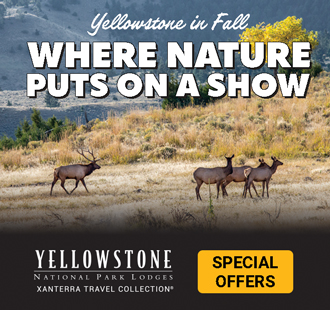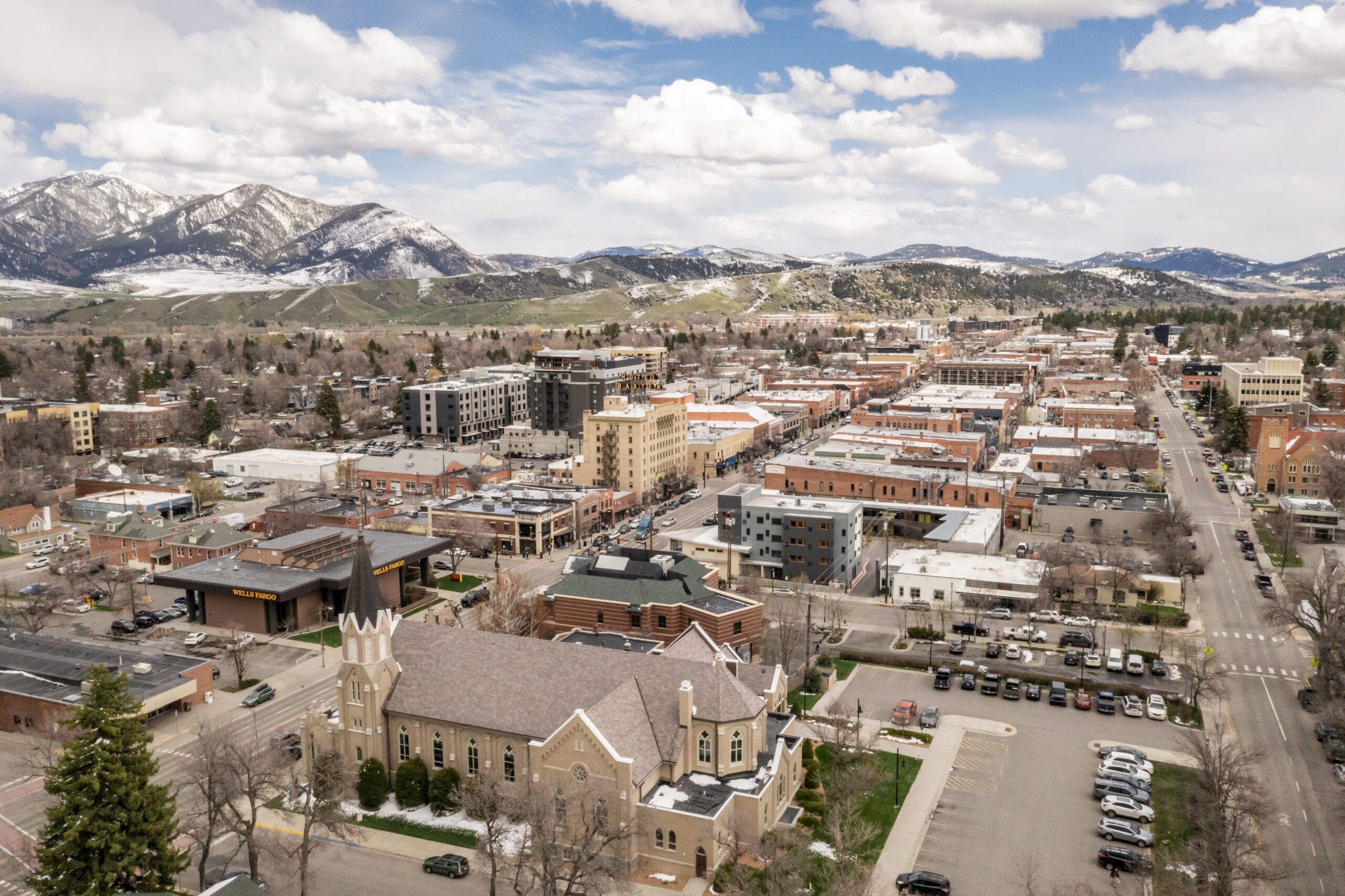Gallatin Crest waiting for someone to start the collaborative process
This article first appeared in the Summer 2012 edition of Mountain Outlaw magazine. Read it here.
By Taylor Anderson
East of Big Sky, 45 miles south of Bozeman’s sprawling development, there’s a part of the world
where most people will never set foot.
The Gallatin Crest is a habitat for grizzlies, lynx, elk
and moose, and is reminiscent of a time before our
impact on the natural world. It keeps wildlife from
development and the roadways cutting the wild
lands abounding southwest Montana.
A grizzly sow roams the rolling prairie along the
Porcupine Creek Trail, marching in and out of
densely covered forests and sauntering to the
stream to riparian vegetation with her cubs in
spring. For the last few years, she’s given visitors to
this forest a hard time, spooking them as if to say
they aren’t welcome.
But the visitors keep coming. Trails bounding past
wildflowers and through thick sagebrush spiderweb
through this 155,000-acre grouping of wild lands.
For recreationists it’s a supreme play area, an ideal
spot for locals and tourists to hike, hunt, horseback
ride, or ride mountain bikes and dirt bikes.
Others cherish its unique and untouched beauty, and
argue we should tread lightly and preserve it for the
next generation. Their ranks have included members
of congress, local leaders and federal judges.
The area, sitting within the Gallatin National Forest,
has existed in a state of purgatory for 35 years—ever
since the Montana Wilderness Study Act created the
Hyalite-Porcupine-Buffalo Horn Wilderness Study
Area in 1977.
Stakeholders from two broad groups—dubbed
recreationists and environmentalists—are staunchly
divided over its management. The only common
ground is a reverence for the land, one side claiming
its right to use it, and the other warning that
residents in the surrounding mountain towns are
loving it to death.
One thing is clear when it comes to ending the arguments:
Something has got to give.
Congress signed into law the Montana
Wilderness Study Act in 1977, creating
nine WSAs, mostly in the western and
southwestern parts of the state. This
was fresh off a period of congressional
activity driven to preserve the country’s
quickly diminishing wild lands, and
also on the heels of the Wilderness
Act, which President Lyndon Johnson
signed into law in 1964.
Wilderness was not yet a politically
divided issue.
Designated wilderness today remains
the highest protection of public land
in the country. Wilderness areas allow
“outstanding opportunities for solitude
or a primitive and unconfined type of
recreation in wilderness,” according to
the Wilderness Act.
These areas, it states, must have four
staples of wilderness character: natural
integrity, apparent naturalness, opportunities
for primitive recreation, and
opportunities for solitude. Wilderness
study areas have more leeway for fewer
restrictions.
Wilderness areas allow non-mechanized
recreation, including hiking and
horseback riding. Biking is considered a
mechanized use.
The Wilderness Study Act directed
federal agencies—the Forest Service,
Bureau of Land Management, Fish,
Wildlife and Parks, and the National
Parks Service—to survey nine areas of
public land in Montana and determine
whether wilderness designation was
warranted.
The bill was plagued with vague
language and guidelines. It charged the
agencies with preserving the “wilderness
character as it existed in 1977” and
potentially recommending them for
wilderness.
Since 1977, wilderness advocates
have successfully argued the Gallatin
National Forest Service hasn’t followed
the guidelines of the law in the Hyalite-
Porcupine-Buffalo Horn WSA, and has
allowed degradation of the landscape.
The Gallatin National Forest
Service from 2003-2006 hosted a
number of public meetings meant
to collaboratively guide then
Forest Supervisor Becki Lockett-
Heath in developing a new Travel
Management Plan for the Hyalite-
Porcupine-Buffalo Horn WSA. The
agency received more than 12,000
letters from concerned citizens
regarding management of the area
during the planning years.
The plan kept open trails that had
seen use and had been enjoyed by
various recreationists.
Judge Donald Molloy ruled in 2009 on
a Montana Wilderness Association lawsuit,
upholding a claim that the travel
plan wouldn’t protect the area based on
1977 wilderness characteristics.
The Forest Service appealed the ruling
soon after, but an interim management
plan went into place that drastically
reduced open trails. Trails open to
mountain bikers reduced from 170 to
20 miles under the new plan, and the
70 miles previously open to motorcycles
and mountain bikes contracted
to 40.
On Dec. 1, 2011, the 9th Circuit Court
of Appeals affirmed Molloy’s opinion,
calling the 2006 travel plan “arbitrary
and capricious.” The court said the new
GNFS plan didn’t account for historical
data and increased use in the WSA
since 1977, meaning opportunities for
solitude would be diminished with the
proposed plan.
“If a hypothetical hiker traversing a certain
route in 1977 would have encountered
one noisy motorcycle, but today
would encounter 20, his opportunities
for solitude have plainly decreased, unless
the impact can somehow be offset
by other factors or considered so small
as to make no qualitative difference,”
the appeals court opinion reads.
The interim plan put in place following
Molloy’s court ruling has appeased wilderness advocates, but has fueled
the anger of motorized and mechanized
users who want access to the land. With
such polarization, the process of mending
relationships and getting everyone
to the table to make a long-term plan for
the area is likely to last years.
A poll of hundreds of attendees at a
February 2012 public forum highlighted
the divide: 80 percent said they
mistrusted other parties interested in
the WSA. However, about 73 percent
said they knew long-term resolutions
would best be achieved through collaboration,
and 86 percent said the time
for solutions is here.
In the motorized use camp, some
argue that since the population of the
surrounding areas has mushroomed, it
would be unfair and nearly impossible
to restrict use to 1977 levels.
Brad Grein, of Citizen’s for Balanced
Use, a motorized use advocate group,
has lived in the area since 1974. Grein
says he’s traveled everywhere in the
WSA and advocates for more trails and
looser restrictions on motorized and
mechanized use.
Grein and others call wilderness
legislation “land grab bills,” and the
groups that support the bills or file suit
“environmental obstructionists.” He
regards the 9th Circuit Court as “the
most liberal in the country.”
“This is just what these environmentalists
and these judges have made up,”
he says of restricting motorcycle and
snowmobiles in the WSA. “If you talk
to Congress, they said it was never their
intent to shut down the recreation uses
that were enjoyed there.”
He’s on an arguably pro-economic side
that says easing regulations and opening
the WSA to recreation would bring
business to the surrounding tourismbased
communities.
Tom Owen owns Gallatin Alpine
Sports in Big Sky and is part of the Big
Sky Mountain Biking Association.
He says because Big Sky’s economy is
dominated by tourism, it’s missing out
if the lands the economy could benefit
from are closed to popular recreation
activities. He said other federal designations
would still protect the land while
allowing recreation.
Bozeman, Owen says, is less impacted
by current restrictions because
the northern border of the HPBH
is 15 miles south of Gallatin Valley.
Those 15 miles are prime recreation
spots for climbers, bikers, hikers and
others.
Roger Jenkins is president of the
Bozeman chapter of the Montana
Wilderness Association. He’s also
a member of the Greater Yellowstone
Coalition and the Wilderness
Society.
Jenkins says Molloy and the 9th Circuit
Court of Appeals judges ruled
according to the law put forth by the
Wilderness Act that “solitude is an
important aspect of wilderness.”
“Clearly, in my opinion, what happened
is the Forest Service, I’m talking
about the supervisors in the late
‘70s and early ‘80s, permitted this
encroachment,” Jenkins said.
At current, both sides threaten litigation
if the Forest Service enforces or
lightens regulations on the land, and
the polarization promises that without
remarkable collaborative efforts, the
HPBH will exist in limbo until no one
can argue whether or not the land is
worthy of congressional wilderness
designation.
It’s been close to 30 years since the last
new wilderness, the Lee Metcalf’s segmented
254,288 acres surrounding Big
Sky, was designated in Montana.
Today, roughly 5 percent of the
country is congressionally designated
wilderness. About half of that is in
Alaska, leaving around 2.7 percent of
lands in the lower 48 with this protection.
About 40 percent of the Gallatin
National Forest’s 1.8 million acres are
already designated wilderness.
In a 1985 report, the GNFS said the
HPBH’s public land had high wilderness
character in publicly owned land,
but was still checkerboarded by private
land once given to Plum Creek Timber
Company.
Three years later a bill passed the Democratic-
controlled Senate and House
that would have created 64,000 acres
of Wilderness along the Gallatin Crest.
The bill was pocket vetoed by then
President Ronald Reagan, something the
Montana Wilderness Association alleges
today was an election favor to Republican
Senator Conrad Burns.
Jen Ferenstein works for the Coalition
to Protect the Rocky Mountain Front,
a group that’s collaborated successfully
with residents and federal agencies along
a 100-mile wildlife corridor in northcentral
Montana that’s rich with natural
resources.
Ferenstein suggests starting by collaborating
on positive ground, in a place that has the potential for wide agreement.
For her group, this meant working in
2004 and 2005 with Burns, drafting
legislation that allowed environmental
groups to buy out oil and gas leases
along the Front. Those, she said, posed
the biggest threat to the integrity of the
land.
After Senator Jon Tester upset Burns in
the 2006 election, Senator Max Baucus
picked up and passed that legislation
verbatim, and the groups stopped the
threat of resource extraction along the
lower two-thirds of the Front.
Finding support for protecting the
Front had clearer direction for Ferenstein’s
group. Unlike the HPBH, the
Front didn’t have a heritage of motorized
recreation, and conservation
groups there collaborated with ranchers,
farmers and hunters on a solution.
What the Front had was multiple sides
that cherished the landscape.
“If you don’t like wilderness because
you fundamentally don’t think the government
should manage land—or on
the other hand if you think every acre
should be wilderness—it’s very hard to
move anybody that’s that ideologically
entrenched,” Ferenstein said.
Ferenstein suggests starting by collaborating
on positive ground, in a place that
now
“If you don’t like wilderness
because you
fundamentally don’t
think the government
should manage land—or
on the other hand if you
think every acre should
be wilderness—it’s very
hard to move anybody
that’s that ideologically
entrenched,” Ferenstein said.
Regardless of the polarization clouding
the HPBH’s final designation, all sides
agree that the only permanent solution
is congressional action—which cannot
be taken to court.
But it’s not likely any politician would
take a quill out of an inkbottle to
regulate the HPBH until the divide is
bridged.
Current Gallatin National Forest
Supervisor Mary Erickson has inherited
a weighty issue in a state that deeply
values its public and private lands. The
Forest Service has no plan to develop a
new WSA management plan as of now.
The Montana State University’s Center
for Local Government is working with
the GNFS to design a community-wide
collaborative to find a solution.
Still, Erickson says although she
believes strongly in the collaborative
process, the GNFS is mandated to follow
the guidelines set by the WSA and
the court rulings. “It has to be within
the court framework and the purpose
of the act, and when people come to the
table, that’s a hard sell.”
Stakeholders meanwhile should pull
out the Rolodex and start building relationships
on the vast common ground,
and stop wasting time and money
fighting it out in court.













